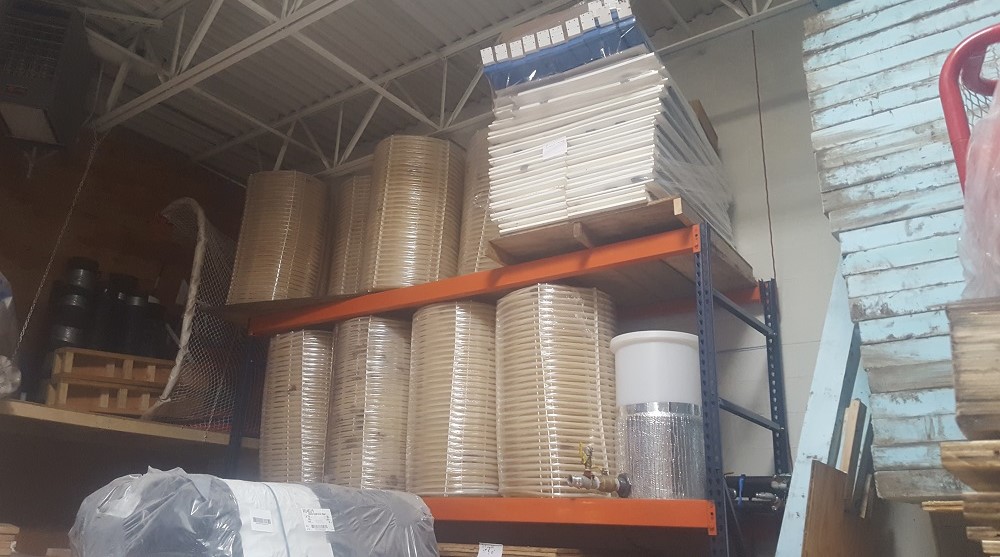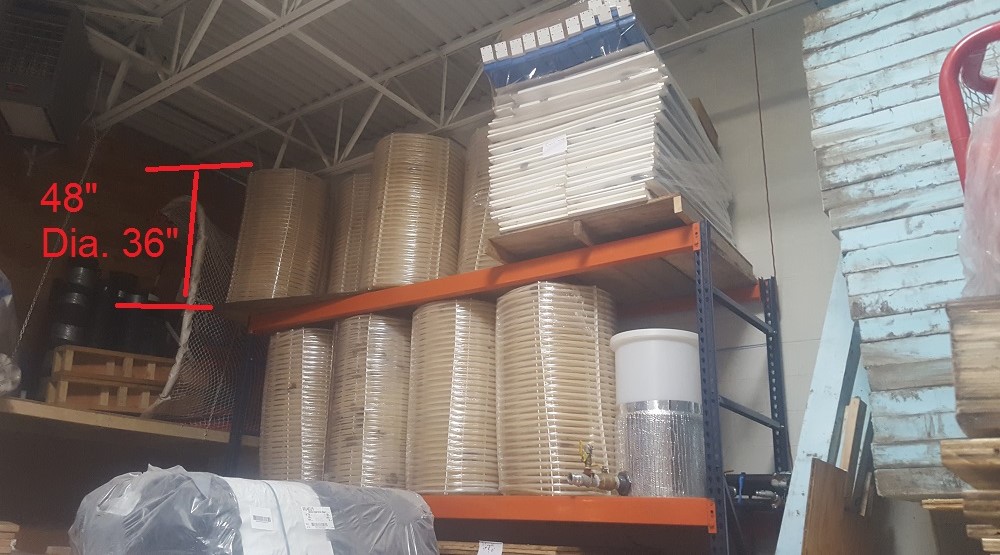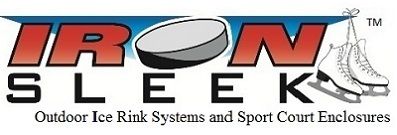Cooling and Refrigeration Info Graphic and Information

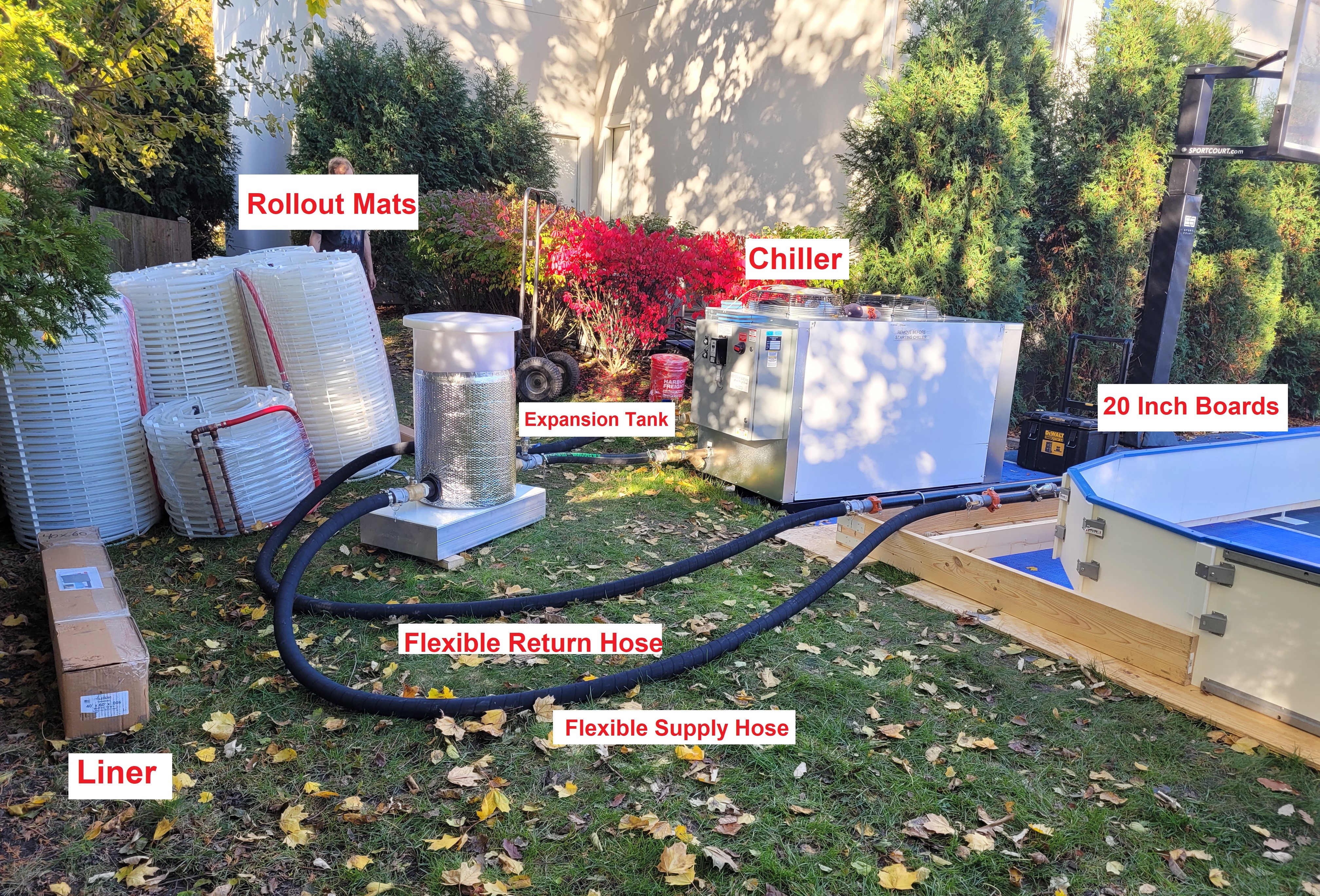
Down below is the whole process of how our refrigeration and cooling systems work and all of the parts needed to make it work and for you to have the perfect ice for you and your family to skate on. A good refrigeration system works as a team to get the appropriate fluids and gas from the pump to the supply header and then into the rink mats so the water can freeze and then back to the return header and then to be transported back reservoir tank so then the process can be repeated so there is no melting.

Guts of the Refrigeration System
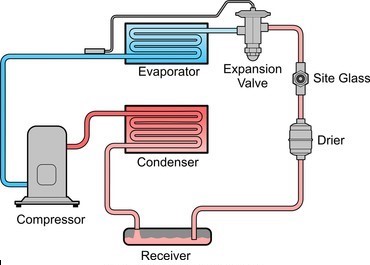
How Chilled Ice Rinks Work
An outdoor rink chiller utilizes the refrigeration cycle shown above with a pump to circulate coolant through the evaporator then through plastic tubes under the rinks water.
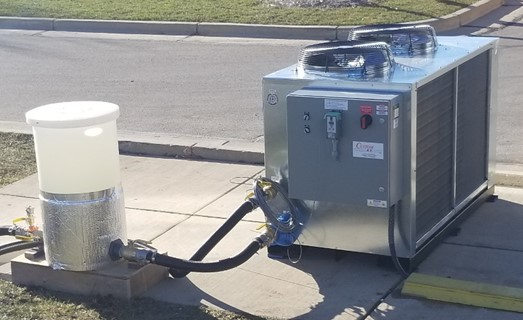
Here are the Chiller System Basics
The chilled coolant after leaving the chiller unit, cools the rink water which surrounds the plastic tubes by indirectly transferring its colder temperature to the water which surrounds the tubes. Because Glycol coolant has a much lower freezing point when compared to water, it can be pumped through the plastic (PEX) tubes at below freezing temperatures and remain a liquid. These tubes filled with glycol act as a indirect heat exchanger for the ice rink cooling mats. The cold liquid glycol flowing within the tubes transfers its cold temperature to the water surrounding the tubes, and simultaneously absorbs some of the heat from the ambient rink water. These plastic tubes are designed to have a supply (colder glycol coolant from the chiller) and a return (warmer glycol coolant transferred from the ambient rink water).
Pump
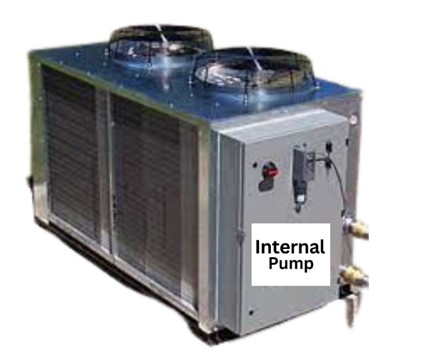
The chiller system depends on a powerful pump to keep the outdoor ice rink system operating. It continuously circulates the glycol coolant to and from the chiller, refrigeration mats, and glycol reservoir via the use of a supply header and return header.
Supply Header (Manifold)
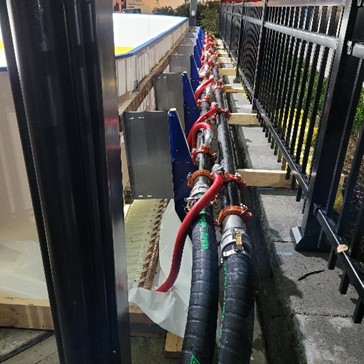
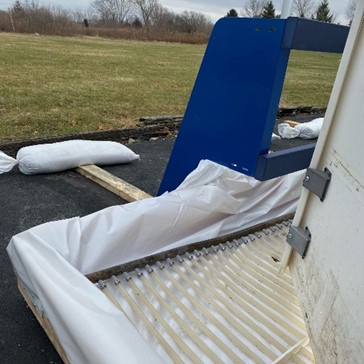
After being cooled by the chiller the glycol enters the rink via the supply header in a very cold state. The supply header is designed to evenly distribute the chilled coolant across the rink mats.
Rink Mats (Portable Roll Up Tubes)
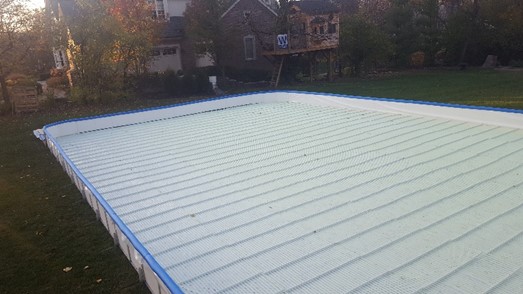
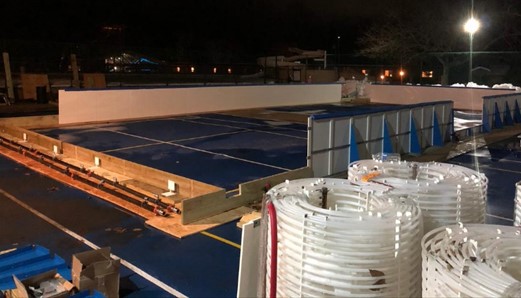
The rink mats are plastic are plastic tubes that allow the cold glycol to circulate through the rink. As the glycol flows through these tubes, it absorbs heat from the rink water, effectively lowering the rink water’s temperature. After this indirect contact with the rink water, the slightly warmed glycol is directed back to the glycol reservoir via the return header. As the chilled glycol enters the ice rink through the supply header it is circulated through the refrigeration mats. The mats work as a heat exchanger. The incoming colder temperature glycol flows through the mats which are surrounded by the ambient (outdoor) rink water. Its cold temperature is transferred to the rink water through indirect contact. After the glycol has circulated the entire rink via the colling mats it is returned to the glycol reservoir via a return header.
Return Header
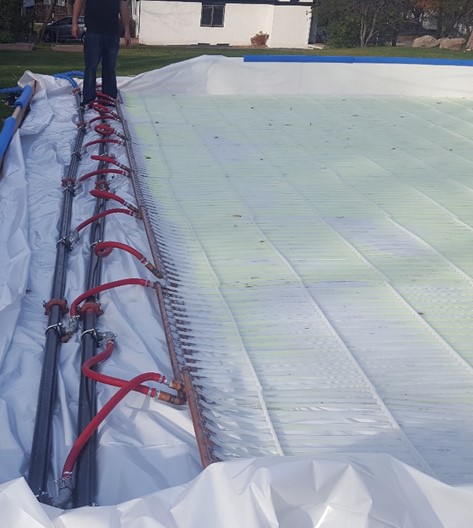
After having lowered the temperature of the rink water via the rink mats (tubes) indirect contact, the slightly warmed glycol is returned to glycol reservoir via the return header, and then to the chiller via the reservoir tank.
Reservoir Tank
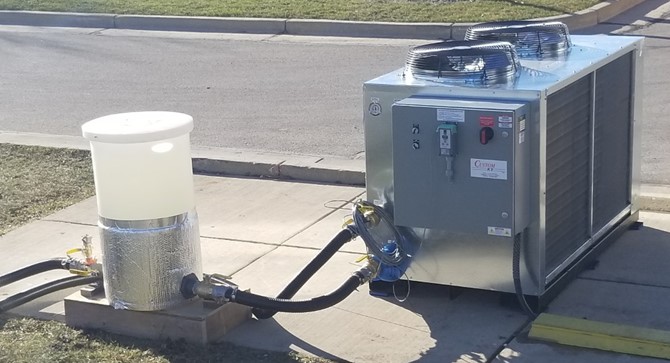
The reservoir tank, also know as the expansion tank is where the circulation pump takes the return Glycol through the chilling process. The ice rink refrigeration system utilizes a reservoir tank to allow for coolant expansion and to manage differences in pressure from supply glycol and return glycol. It also acts as a storage tank and ensures that there is sufficient coolant to operate the system.
Freeze Cycle

A closed-loop system ensures that the glycol is continuously circulated between the rink mats, the reservoir, and the chiller, facilitating the transfer of heat out of the ice rink. This freeze (exchange) cycle continues until the water around the cooling mats freezes solid. Once the water surrounding the ice rink freezing mats are frozen the temperature is maintained through an automatic internal thermostat.
Thermostat
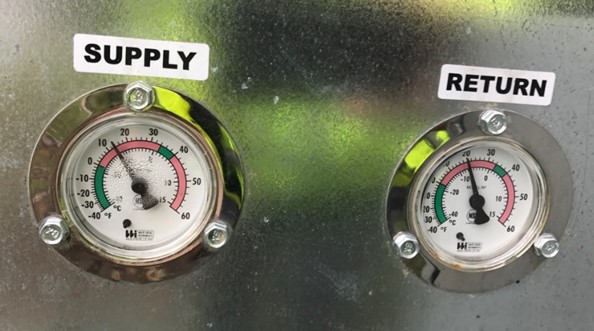
The automatic thermostat monitors glycol temperature, turning off the compressor once it's cold enough to maintain a solidly frozen ice rink surface, saving energy. It controls the cooling cycle by activating the compressor when more cooling is needed and turns it off when ice quality is optimal.


Here are the basics of how an Ice Rink Chiller System Works and all of the Benefits of having a Refrigerated Outdoor Ice Rink
Unseasonably warm winter weather has made keeping an outdoor ice rink difficult and labor intensive. Refrigerated outdoor ice rinks or chiller ice rink systems help solve the problems associated with unseasonably warm weather. Ice rink chillers help reduce ice rink maintenance time and costs by keeping constant ice temperature. They help for a more reliable ice-skating experience as they help reduce weather dependance for outdoor skating rinks. Our chiller systems create a situation where you can have “ice on demand.” An additional benefit of a chilled rink is its ability to help extend the outdoor skating season from late Fall to Early spring in most climates. We like to say that our weatherproof rink systems help you “skate from Thanksgiving to St. Patrick’s Day.”

Who can benefit from a Chilled Ice Rink System
This new outdoor winter entertainment option has opened exciting possibilities for Backyard ice-skating enthusiasts and hockey lovers, local businesses, universities, clubs, and resorts. Backyard hockey and ice-skating enthusiasts now can bring the thrill of a consistently frozen rink to their own homes, reducing the frustration of constantly melting ice. Restaurants and bars can leverage this breakthrough in outdoor entertainment to attract customers away from competition.
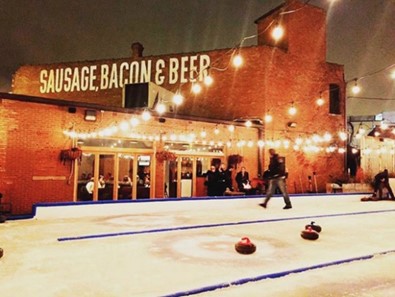
Country clubs and Ski Resorts can enhance their membership by providing additional winter amenities, expanding their appeal throughout the year. They can diversify their offerings by incorporating family-friendly ice-skating activities.
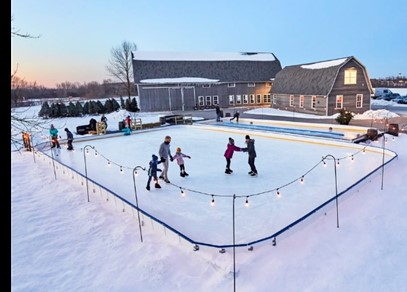
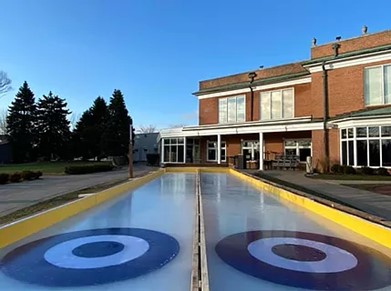
Municipalities and Park Districts
Municipalities and park districts can now provide their communities with exciting winter entertainment options, fostering a sense of togetherness and creating memorable experiences for residents of all ages.
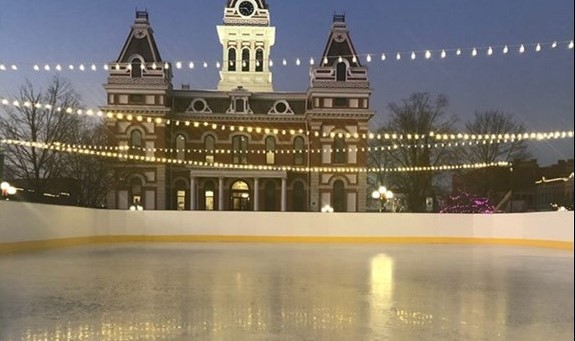
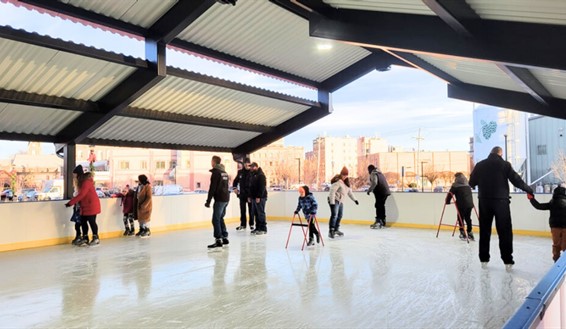
Storage Pictures and Information
As a rule of thumb divide by 10, a 2000 Square Foot rink needs 200 Square Feet which is basically a 10' x 20' spot with a reference point being that it is the size of a parking spot. If you are able to use racking you can condense it into half of the space.
